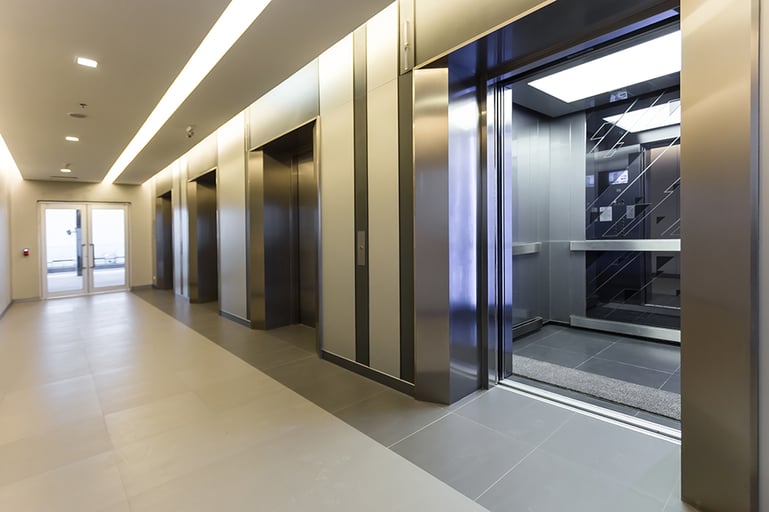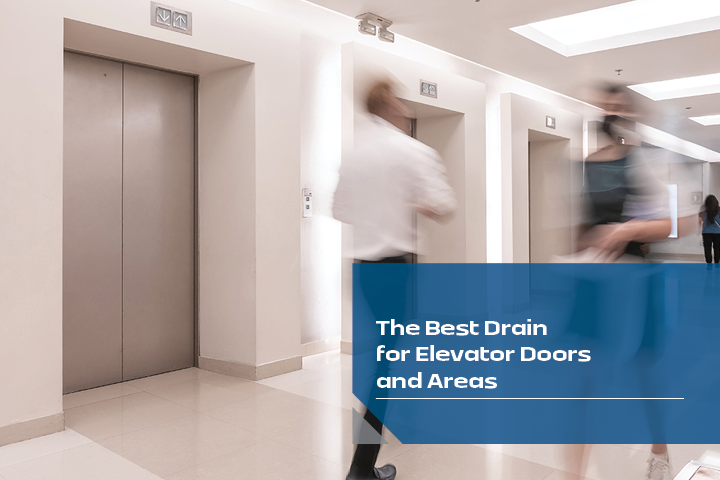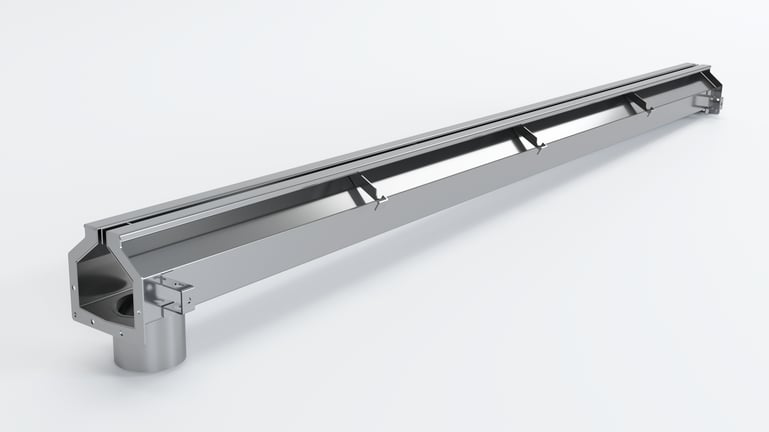In a high-rise emergency situation, such as a fire, it is vital that civilians are able to leave the area as quickly as possible, and that rescue personnel are able to access the affected area unimpeded. It is crucial then, that the proper infrastructure is in place to ensure nothing gets in the way of the brave men and women who risk their lives to help in these worst-case scenarios, and a damaged or flooded fire elevator can seriously slow down rescue operations.
One important way to protect these vital pieces of machinery is to install an elevator drain by the elevator doors on every floor to provide proper sprinkler system water removal, and keep the emergency elevator shafts dry and protected.
What Are Elevator Drains, and Why Install Them?

Elevator drains are drainage systems for an elevator. Their purpose is to catch water that can come from fire sprinklers, fire hoses, or flooding. Installing drainage in front of the elevator protects the unit and minimizes the amount of water that enters the shaft, which can cause damage to the elevator and make it difficult for rescue crews to do their job.
Although most important, elevator threshold drains aren't limited to the front of elevators; they can also be installed in elevator lobbies, stairways, and other threshold areas to remove water. In other use case scenarios, drains can play an even more critical role. Drainage systems in various areas can help catch water, protect the building, and make rescues and evacuations much safer during fire emergencies.
What to Look for In Elevator Drains
When considering the different options available for use as an elevator drain, you will need to keep some key features in mind:
ADA Compliance / Heel-Proof
Ensuring that the drainage system you choose meets ADA compliance is critical. Most people can use an elevator to move easier between floors, but they are primarily there for people who have mobility issues. People who use canes, walkers, or wheelchairs need to be able to go past the elevator lobby and elevator doors safely without the fear of getting caught or tripping over a drainage system.
Suitable Flow Rate
The flow rate is another essential factor for elevator drains. You want to ensure that your chosen system meets the flow rate required by your local building code. If the flow rate isn't adequate, the system can become overwhelmed and become ineffective. The following codes require a 100 GPM flow rate:
- New York City Building Code 3007.3
- California Building Code 403.6.1, 403.6.2, 3007.4, 3008.4
- San Francisco Fire Code, Section 511.1.4
- 2018 International Building Code 3007.3 and 3008.3
Aesthetics
Safety precautions are vital, but so are the aesthetics of your design. A bulky drainage system disrupts the visual layout of your floors, and can become an eyesore with dirty or damaged grates. Ensure your drainage choice has an aesthetic that supports your design instead of distracting from it.
2000 Series Elevator Slot Drain
Slot Drain Systems has been around since 1986, providing an innovative solution to drainage needs in various applications. The 2000 Series Elevator Slot Drain is a subsurface system modeled after the traditional trench drain system, but without many of the drawbacks.
Benefits of the system include:
Design
The Slot Drain is a compact, linear system that comes pre-sloped and pre-assembled. Unlike a traditional trench drain, the 2000 Series Slot Drain has a small channel opening, no larger than 3/4" wide, which eliminates the need for a drain cover. The lack of cover allows the system to become virtually invisible once installed.
Flow Rates
Despite the compact size of the Slot Drain, it has an impressive flow rate. The 2000 Series Elevator Slot Drain is able to reach the target of 100 GPM with only a drain length of 7’9”. Subsequent drain length can also be added to increase flow rates higher than the standard 100 GPM as well.
Stainless Steel
The stainless steel design of the 2000 Series Slot Drain provides many benefits. The main point is its strength: stainless steel won’t bend or break like plastic, making it durable even under heavy traffic. Stainless steel is also corrosion and rust resistant unlike galvanized steel or cast iron, further ensuring its durability and maintaining its appearance for years to come.
ADA-Compliance / Heel-Proof
It is critical to ensure that your elevator drains are safe for everyone. The 2000 Series Elevator Slot Drain, features two 5/16" wide slot openings, meets ADA regulations. The Slot Drain system will ensure that wheels, canes, and walkers won't get stuck in the opening.
Protect Your Building and Elevators

Elevator drains are becoming a common feature in buildings and codes are changing to require them more and more. This shift will prevent water overflow that could occur in the shaft, an especially important feature in the event of emergencies.
Choosing the right drain for the job is vital, you need something efficient and reliable. If you want to install elevator drains in your building, look no further than the 2000 Series Elevator Slot Drain.
Contact our experts at Slot Drain today to learn more about the 2000 Series Elevator Slot Drain, and how to plan to include it in your design as the best elevator drain for your building.



